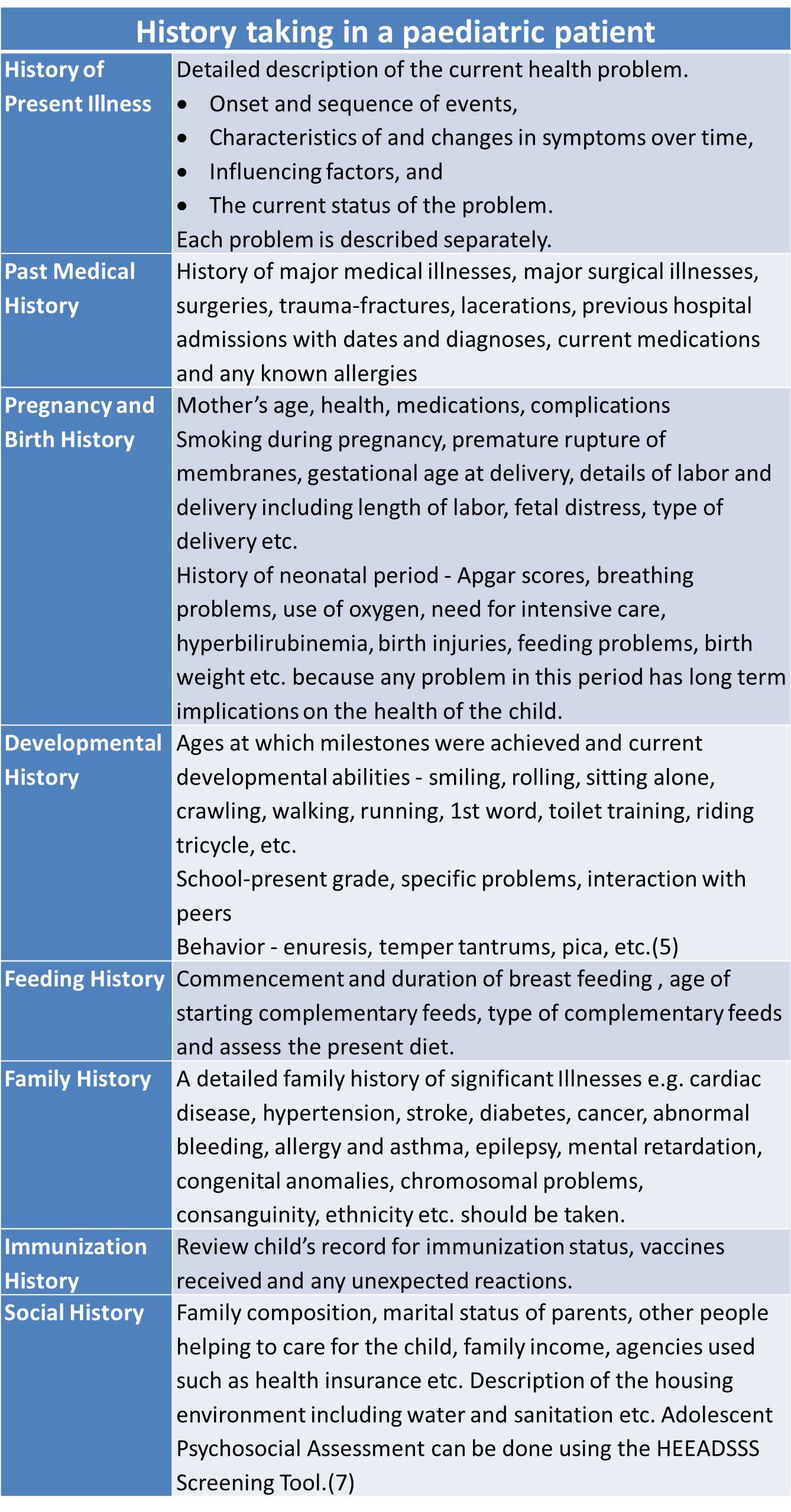History taking in a paediatric patient

References:
Marcia L. London. Pediatric Assessment. Maternal & Child Nursing Care, Ed 3rd, Prentice Hall, 2010: 961-1022.
Byrnes,K. Conducting the paediatric health history: A guide Pediatric Nursing, 1996; 22: 135–137

